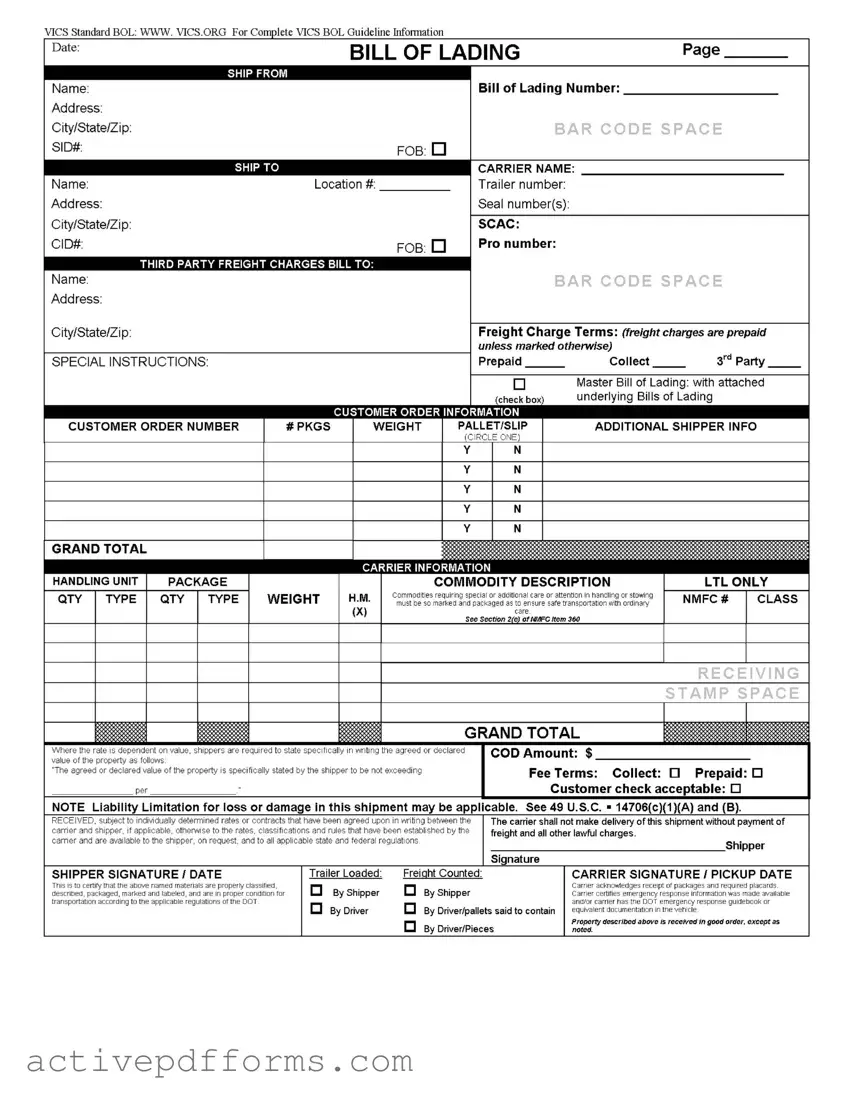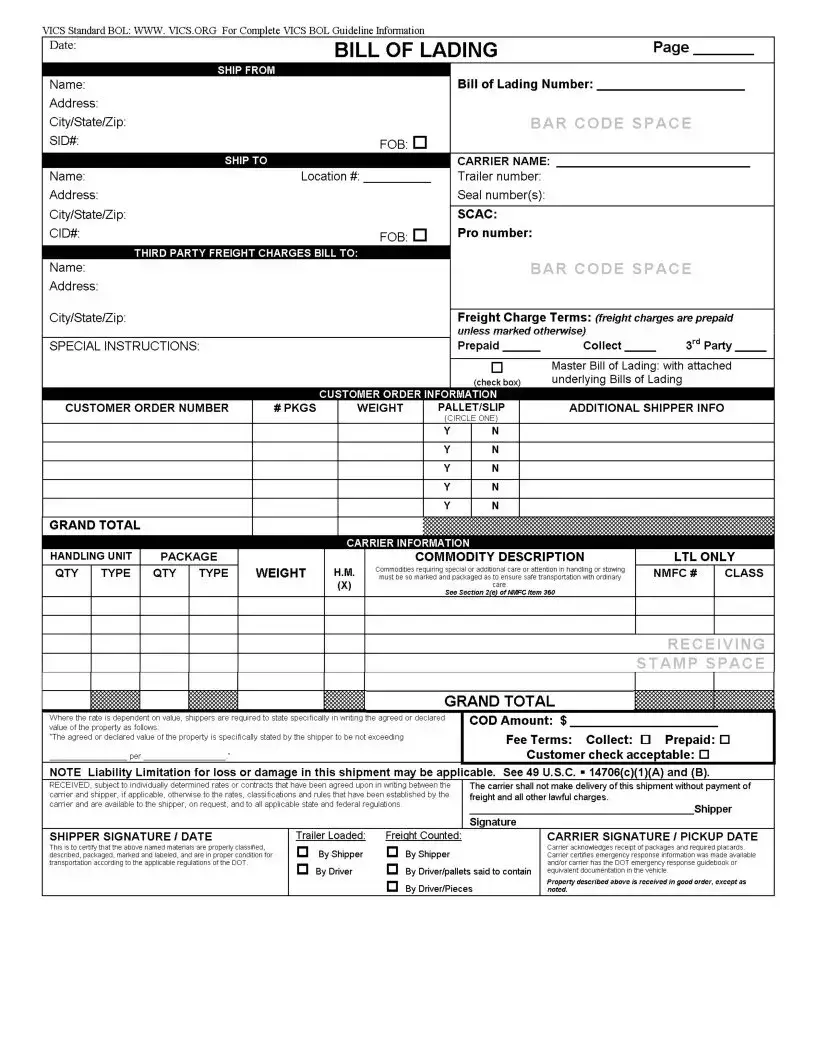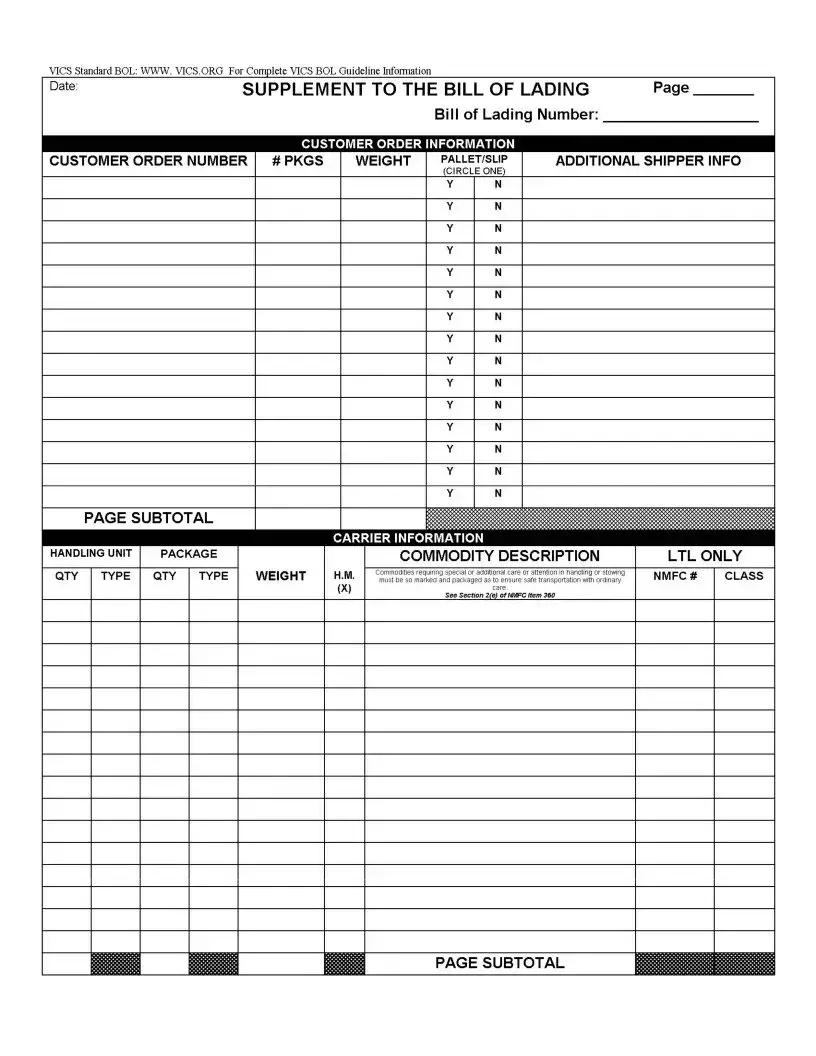In the complex world of shipping and logistics, the Bill of Lading plays a pivotal role, ensuring that goods move smoothly from one point to another while maintaining a clear record of the transaction. The VICS Bill of Lading (BOL) is a standardized form that is widely recognized and utilized within the industry, particularly for those involved in the transportation and receipt of goods across varied sectors. This form not only captures vital information such as the shipper's and receiver's details, the bill of lading number, and the shipment details including the number of packages, weight, and type of goods, but it also outlines the terms of freight charge, including whether the charges are prepaid, collect, or billed to a third party. Special instructions, customer order information, carrier information, and details about the shipment's commodities are systematically organized within this form to ensure the safe and efficient transport of goods. Additionally, the form addresses legal and safety regulations, requiring shippers to certify that the materials are properly classified, described, packaged, marked, and labeled, thus adhering to the applicable regulations for transportation. The supplement to the bill of lading provides space for any additional information that may be necessary for a complete record of the shipment. In essence, the VICS BOL serves as a comprehensive document that facilitates the transportation process, providing all parties involved with a detailed and standardized account of the shipment's particulars.


